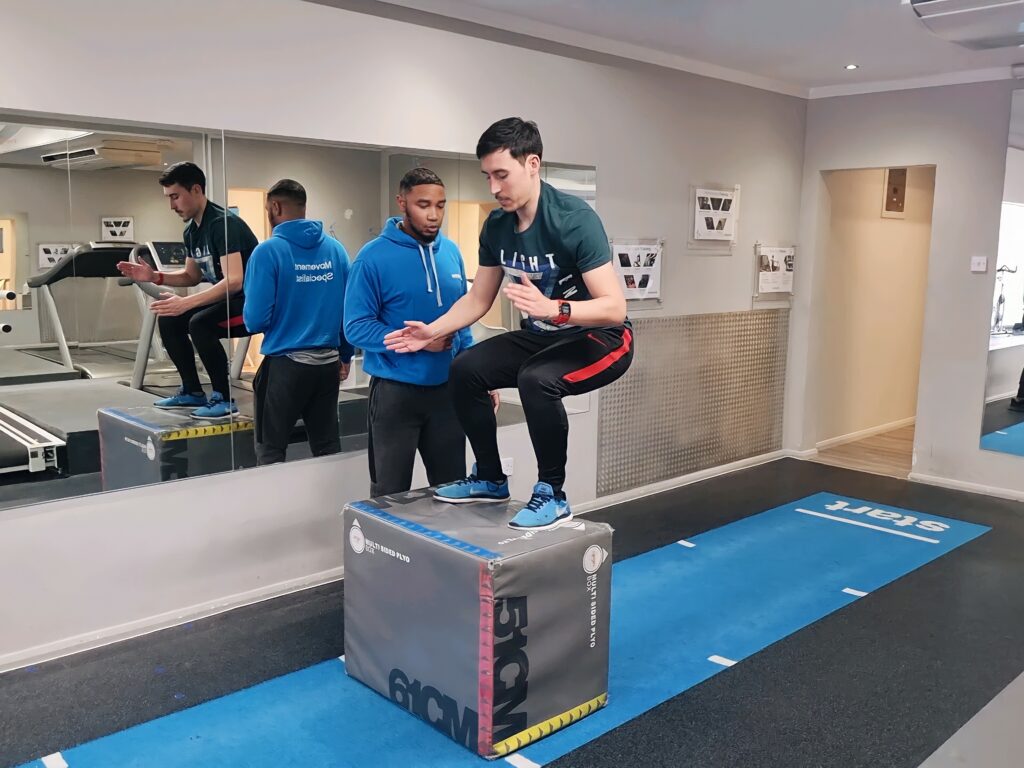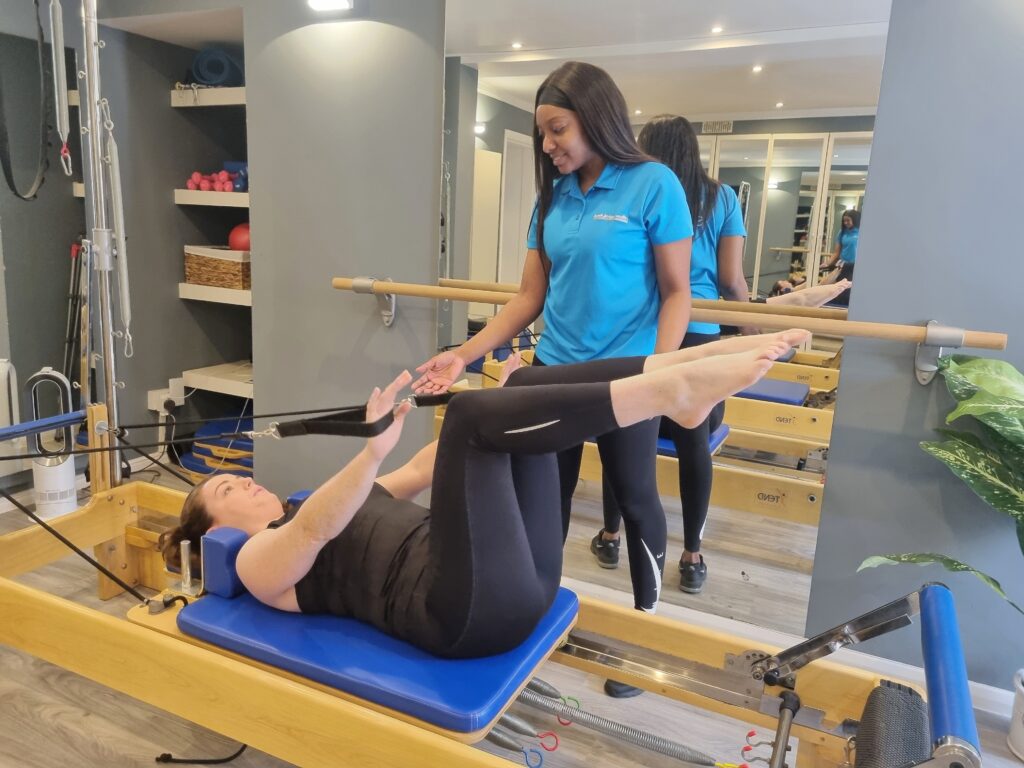CLAPHAM CHASERS RUNNING & TRIATHLON CLUB
INTRODUCTION
WELCOME TO YOUR FIRST STEP IN IMPROVING YOUR SPORTING PERFORMANCE.
If you have been directed to this page you are part of the Clapham Cycle team. Hopefully you are not here because you are injured but because you are keen to understand more about avoiding the common injuries that cyclists can sustain.
This resource is designed to help cyclists develop their foundation which is important for injury prevention and to allow the best results from any performance development training you may be undertaking, now or in the future. It is hugely important for cyclists to develop their athletic ability to enable their bodies to move efficiently and adapt to training stresses. We are keen to keep you cycling and reduce the risk of injury.

AIM
The goal here is to build stronger runners, who are more durable, move efficiently and are therefore less likely to sustain injuries. You enjoy your running, whether it is racing, triathlon or recreational running to stay fit the key for every runner is to be able to run. Injuries are an unavoidable part of any sport however there is plenty that can be done to reduce the injury risks, and this is the main purpose for you here.
We have looked at the most common running injuries, knee related if you are interested, and analysed the driving forces behind those injuries, hip control and movement patterns, and put together an individualised retraining programme to help you improve your movement patterns and reduce your injury risks. Yes the focus is on the hip however it plays a major role in back problems in runners, hip and knee injuries along with the landing pattern and so foot, shin and other ankle and tendinopathy issues too.

OUR PROGRAMME
Review your current hip movement patterns, following the video and you will fall into one of 3 areas of movement;
HIP FLEXION CONTROL ISSUES
HIP ROTATION CONTROL ISSUES
INJURY PREVENTION TRAINING
STRENGTH
STABILITY
MOBILITY
In the modern world our habitual postures have a huge effect on our movement patterns. Creating good mobility is essential, especially around the hip region with all the sitting we tend to do each day. Completing a good stretching routine as part of your training programme has huge benefits to the runner.
Effective management is important to help prevent overloading of tissues and therefore potential injury issues.
TECHNIQUE
If injuries are preventing you from running then reviewing your running form or technique can play a huge role in you understanding the causes of these loading issues. There are often small changes that can be made to help you change stress and improve your movement efficiency dramatically reducing injury risk.
Body Logic Health offer running video analysis to help you identify issues related to specific injury concerns or recurring injuries.
STAMINA
This is a hugely important area for every runner and is a key element in injury prevention. Obviously this is an area you will work on, and The Clapham Chasers have a wonderful mix of weekly runs to help you develop your stamina, work on intervals and build your longer runs. It is important for all runners to change their running pace during their training week, this decreases time spent on the ground and dynamic strength, as well as developing your cardiovascular capacity.
Develop stamina as part of your injury prevention programme.
CLAPHAM CHASERS OFFERS
Running Video Analysis
(45 Minutes)
Normally – £55
Clapham Chaser Offer – £40.00
USE CODE
UNDERSTAND YOUR MOVEMENT PATTERN
IN THIS SECTION YOU WILL FIND THE ASSESSMENT VIDEO.
This is the key video for the prevention programme to work effectively. Understanding how you move and where your weaknesses lie so you can address them and change excessive stress in one part into even loading across your body. In turn improved movement will help reduce your injury risks.
Build a Stronger Runner
HIP FLEXION CONTROL ISSUES
IN THIS SECTION YOU WILL FIND THE RETRAINING EXERCISES FOR THE HIP FLEXION CONTROL ISSUES.
So you have identified an inability to stay upright when you complete the split squat exercise. In the following videos you will find the four key exercises to help improve your hip range of movement and muscle activation. It will take you between 6-8 weeks to improve your movement patterns here, particularly if you sit at a desk all day, therefore you need to focus on a good routine that you can complete at least three times a week for the best results. It would also be beneficial to work on your hip flexor and quad flexibility to, so get your stretching routine right along side this programme.
HIP ROTATION CONTROL ISSUES
IN THIS SECTION YOU WILL FIND THE RETRAINING EXERCISES FOR HIP ROTATION CONTROL ISSUES.
So you have identified an inability to control rotation when you complete the single leg hip and hold exercise. In the following videos you will find the four key exercises to help improve your hip range of movement and muscle activation. It will take you between 6-8 weeks to improve your movement patterns here, particularly if you sit at a desk all day, therefore you need to focus on a good routine that you can complete about three times a week for the best results. It would also be beneficial to work on your hip flexor flexibility to, so get your stretching routine right along side this programme.
UNDERSTAND YOUR MOVEMENT PATTERN
IN THIS SECTION YOU WILL FIND THE RETRAINING TO MAINTAIN GOOD HIP STRENGTH.
You fall into the lucky runners who currently have good hip control, which is brilliant news. So here we have combined the toughest exercises from both retraining programmes to help you maintain your good hip strength that is already in place. Too often we see over time that our habitual postures change and adapt our to movement patterns. This is your chance to use the programme to maintain good movement control around your hips and reduce any adaptions the body may make over time. This would be a great programme to work into your post run sessions once or twice a week to help you stay strong and improve your performance.
Stay strong for long term benefits
WHAT NEXT?
WHAT NEXT FOR YOUR INJURY MANAGEMENT?
WHAT NEXT FOR YOUR INJURY MANAGEMENT?
If you have found that the hip training has helped your running form and possibly even your speed then it would be sensible to incorporate this training into your weekly routine. The problem with habitual postural changes is you have to keep working on the maintenance side to obtain the best long term results. Too many runners focus on pain alone and when this settles stop the training and revert back to old habits, not surprisingly problems return.
If you enjoy your running then keep up the good work to allow you to enjoy and maximise your potential.
If your problem has not resolved or you are still experiencing issues then it is a great idea to review your current running form. The Body Logic Health, Running Evolution programme is a fantastic way to understand how you move and the issues that can be addressed to move better and run better.
Build A Better Runner.
Ready to start your recovery?
Get in touch with us now
Have a question?
Wondering how we can help you? Give us a call and one of our expert team will be happy to answer all your questions!
Ready to book?
You can book your appointment online by clicking below. If you’d prefer to talk first you can call us on 020 7924 6068 or email battersea@body-logic.co.uk